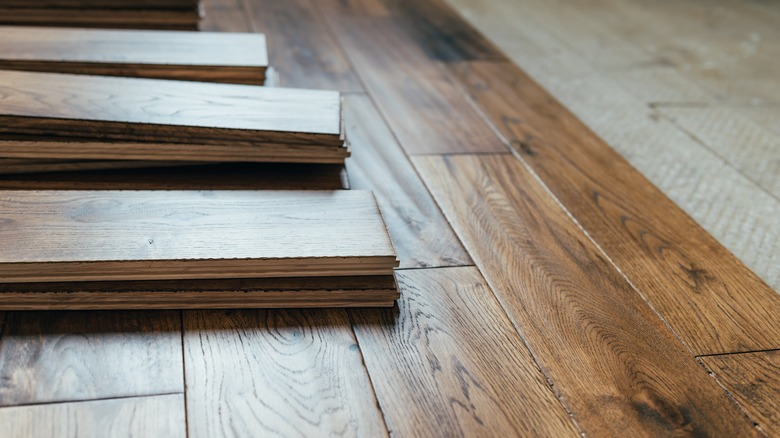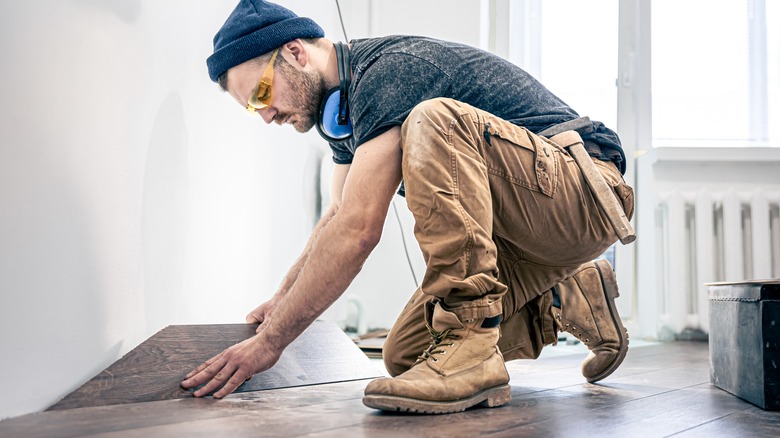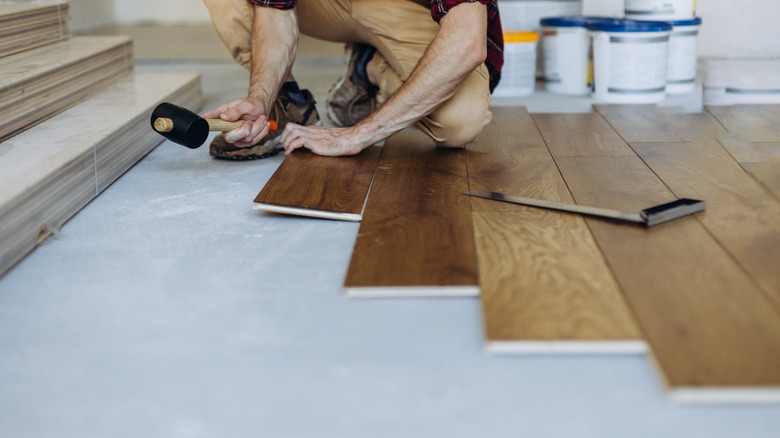Installing Hardwood Over Laminate Flooring: Good Or Bad Idea?
Installing a new floor in your home could be a great way to add value, change the vibe, and modernize the space. However, the thought of having to rip up the existing floor, level the surface under it, and then build a new floor on top can seem exhausting. For this reason, you may be thinking about installing hardwood over your laminate flooring — white it's completely possible to do this, but you need to be careful about your steps.
Laminate floors tend to be durable and long-lasting, able to handle years of wear and tear without any significant damage to them when properly installed. That's why, even when they look old and dated, they are often still in structurally good condition, which makes it possible to lay new flooring over the top of laminate.
Depending on the type of wood you choose, hardwood floors can often be installed right over the top of the laminate without actually requiring any glue or adhesive to hold them into place. With long enough nails to go through multiple layers or a click-in-place style of flooring, they can be installed over most types of hard, level surfaces. Before making this decision, though, consider a few pros and cons of installing hardwood over laminate or starting fresh with a level base after removing it.
Key benefits and opportunities from installing hardwood over laminate
There are plenty of reasons to replace laminate with hardwood from the texture and look to the added value. The benefit of installing hardwood over laminate is that it saves you the time and money that goes into removing the laminate flooring and then fixing the subfloor as necessary. If your laminate is glued into place like some older styles, that's a significant amount of work to manage. If you're trying to install hardwood floors in a small room, going right over the laminate will be the best route. A quality hardwood flooring material will hide some imperfections in the floor, like areas where there are small dips.
Be sure to choose the type of hardwood that is best for this project. The highest quality tends to be solid hardwood flooring, which needs to be installed properly to minimize the risk of buckling or gapping as the floor experiences changes in humidity. A better option could be end-engineered hardwood with a click-in-place design since it doesn't typically need to be glued down (and may not need to be nailed either). That's going to save you the work of having to worry about the subfloor in this project.
Consider a few drawbacks too
In the ideal situation, it would be simple to just add layer upon layer of flooring for speed and efficiency, but sometimes, that's going to be a problem. It is suggested that laminate flooring is better than hardwood floors because it can be a floating floor that doesn't adhere to the subfloor. However, if you have a floating floor, it may not be ideal to try to install hardwood over the top of it. To install over a floating floor like this, the subfloor has to be in a rock-solid shape, and the existing floor pieces must be secured properly to it. Another concern with adding hardwood on top of laminate is that it will raise the height of the floor overall, which is problematic if it creates a tripping hazard or creates difficulty in spaces near cabinetry and opening doors.
You also don't want to install hardwood over laminate if the laminate has holes in it, has caked-on debris or sticky substances on it, or is otherwise in bad condition. Don't try to cover up water damage or mold like this, as that could worsen the problem. If your time and budget allow, removing laminate and installing new hardwoods can be the better option. However, there's no harm in this process if you've ensured the stability and overall functionality of the added layer in your home.


